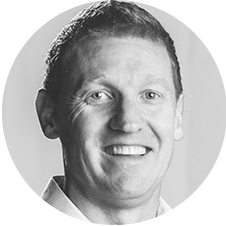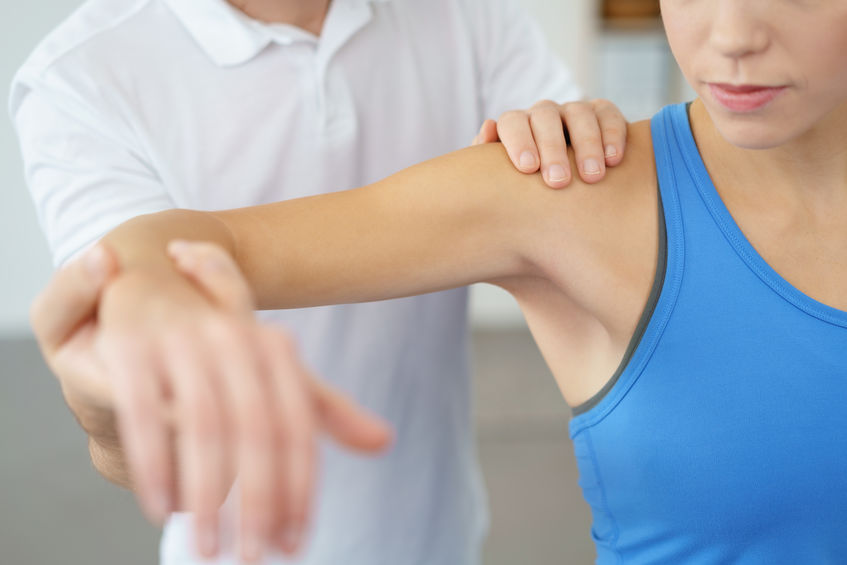
As physios, we’re big believers that the more you move, the longer you live. Yet, while we’ll happily espouse the benefits of participating in sport and fitness activities for both the body and the mind, we’re also witness to A LOT of sports injuries. Because it’s our aim at The Alignment Studio to help you stay in the game, resident sports nut Conor has outlined four of the most common sports injuries, plus some useful tips for prevention. Play on!
ANKLE SPRAIN
Ankle sprains happen to people of all ages. They occur when you ‘roll your ankle’, which over-stretches the ligaments.
Symptoms
Symptoms of an ankle sprain include acute pain, swelling and bruising, as well as difficulty weight bearing/walking. The pain usually starts to subside after the first 3 to 4 days.
Causes
A sprain occurs when the ankle is suddenly twisted/rolled and forced beyond its normal range of motion, stretching or tearing the ligaments. This can occur when landing awkwardly, stepping on another player’s foot, or getting your foot caught in the ground when turning. Ankle sprains are common in all sports and activities that involve a lot of jumping, turning, and sudden changes of direction.
Prevention
In general, it is important to warm up properly and wear supportive footwear when exercising. Incorporating balance and plyometric exercises into your gym routine can also help.
Treatment
For the first 72 hours, follow the RICE (rest, ice, compression, elevation) protocol. In severe cases an x-ray or MRI may be recommended to rule out a fracture or serious injury to the surrounding ligaments and tendons and joint cartilage. Crutches may help for the first week, or a moon boot/brace/taping may be recommended to allow the ligaments to heal.
After the acute pain has eased, your physiotherapist will start you on a rehabilitation program to strengthen all the stabilising muscles and ligaments. The most important thing after an ankle sprain is to complete this rehabilitation to strengthen the surrounding musculature properly and return your proprioceptive or balance ability. Your physio will run you through sport specific exercises, i.e running, turning, jumping and landing exercises, to help prevent recurrent problems.
In the case of an ankle sprain, it can often take up to 6 weeks before a return to sport.
ROTATOR CUFF INJURY/ TEAR
The rotator cuff is a group of four muscles and their tendons that arise from the shoulder blade and attach to the head of the humerus (upper arm), forming a cuff. The rotator cuff centres the humeral head in the shallow socket and provides strength and stability during motion of the shoulder joint. It also helps you to abduct (raise arm to the side), internally rotate and externally rotate the shoulder.
Symptoms
Rotator cuff injuries usually start with a nagging ache in the shoulder when lifting/reaching overhead, dressing, or lying on the shoulder at night. This develops into pain and weakness with repetitive use, or when lifting the arm overhead.
Causes
This common sports injury is mainly due to a trauma to the shoulder, or an overuse injury caused by repetitive overhead sports like tennis, volleyball, pitching etc.
Prevention
As the shoulder joint is so mobile, it depends on the strength of the rotator cuff muscles and tendons for stability. To prevent injuries to the shoulder it is important to strengthen the rotator cuff as well as the bigger muscles around the joint. Rotator cuff exercises should be incorporated into all gym programs that involve upper body strengthening. You also need to strengthen the muscles that stabilise the scapula as this provides the base for all shoulder movements. If one of these muscles is weak, it will place more stress on the rotator cuff tendons at the front of the shoulder.
Thoracic (upper back) mobility is also essential in preventing shoulder injuries. Poor mobility in the thoracic spine will cause a person to have reduced thoracic extension and rounded shoulders. This places a lot more load on the rotator cuff tendons and can increase the risk of injury.
Treatment
Rehabilitation involves strengthening the rotator cuff, the muscles that stabilise the scapula, and working on general mobility. Partial thickness tears will usually heal themselves with rest and the appropriate rotator cuff strengthening program. Full thickness tears may need to be surgically repaired if the person is returning to a high level of sport/activity. Older patients can return to normal function through conservative management by strengthening the remaining muscles of the rotator cuff.
RUNNER’S KNEE
Runners knee (patellofemoral pain syndrome) is a term used to describe pain in the front of the kneecap. It is usually caused by poor tracking of the kneecap due to a muscle imbalance at the hip/knee/ankle and/or poor biomechanics of the lower limb.
Symptoms
The main symptom of runner’s knee is a dull ache behind the kneecap (patella). It is usually aggravated by running but also squatting, kneeling, and going up and down stairs. Other symptoms can include swelling and grinding in the front of the knee.
Causes
It is obviously very common in running, especially long-distance running. However, runner’s knee can occur in any sport that stresses the knee joints, such as football, netball or skiing.
Prevention
Stretching and a good warm-up/warm-down will help prevent stress to the knee joint when training or playing sport. Gradually increasing running is very important when you haven’t been active for a while and are training for a 10km run/marathon.
Strengthening your hip stabilisers also helps to ensure that the knee tracks well and doesn’t collapse inwards when training. This is done through single leg exercises like lunges, step ups, and single leg bridges.
Treatment
Initial treatment consists of RICE for the first 72 hours. Taping can be very useful to unload the kneecap and ease the acute pain to allow it to settle.
Your physio will need to assess you to determine the true cause of your knee pain and you may need some hands on treatment to get you moving properly. Your physiotherapist will then give you a series of activation and strengthening exercises to work on the tracking of the patella and strengthening the muscles of the hip and knee.
ANTERIOR CRUCIATE LIGAMENT (ACL) INJURY
The ACL is one of the main ligaments inside the knee that connects the thighbone (femur) to the shinbone (tibia).
Symptoms
Symptoms of ACL rupture include a loud popping sensation when it happens. There is severe pain and rapid swelling due to bleeding in the joint. You will also experience an inability to weight bear, and a feeling of instability on twisting movements as if your knee will ‘give way’.
Causes
ACL injuries are common in sports that require a lot of jumping, landing, and sudden changes in direction, such as soccer, netball, AFL, skiing, and basketball.
Prevention
Muscle strength and conditioning is very important in preventing ACL injury. Neuromuscular training focusing on balance, muscle firing patterns and landing technique can help to minimise the risk of injury.
Treatment
Initial treatment is RICE to help the acute symptoms settle, and an MRI to diagnose the severity of the tear. You may need a brace or crutches to stabilise your knee and allow the injury to settle.
If it is a partial thickness tear, your physiotherapist will start you on a rehabilitation program to strengthen the muscles and ligaments of the knee. The final stages of rehab will focus on sport-specific exercises like running, cutting, turning, landing etc.
If it is a large tear or complete rupture, the usual course of treatment is surgical repair. In the surgery the surgeon will remove the torn ACL and replace it with a tendon (usually hamstring). After the surgery, you are straight into a rehabilitation program with your physiotherapist to regain full range of motion, muscle strength and function.
It can take anywhere from 9 months up to 1 year to return to sport after an ACL reconstruction.
To improve your sporting performance and reduce your risk of injury, please call us on 9650 2220 to discuss our biomechanical assessment and screening services.

Pete Hunt is a highly skilled physiotherapist with nearly three decades of experience working in sports physiotherapy and private practice. The Director of The Alignment Studio, he has a special interest in musculoskeletal and sports injuries, orthopaedic rehabilitation and postural syndrome. With a caring, communicative approach, Pete uses a combination of joint and soft tissue mobilisation and exercise prescription to treat his clients. He’s also passionate about education for injury prevention and lasting results.
